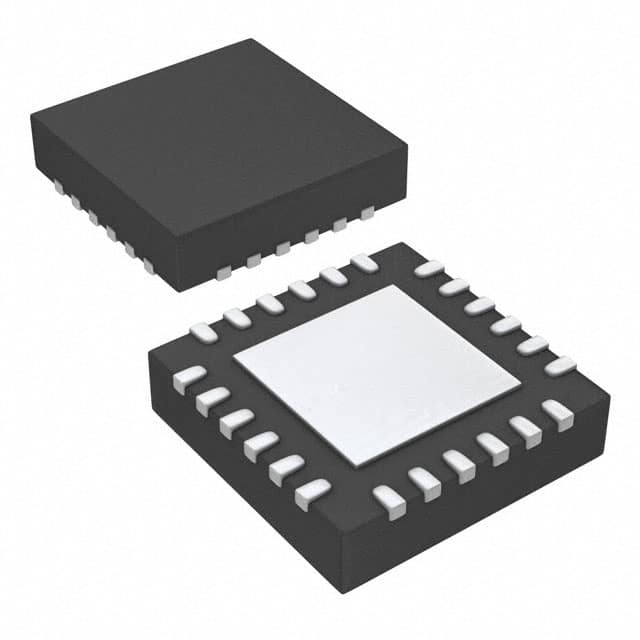Lihat spesifikasi untuk detail produk.

BQ24292IRGER
Product Overview
Category
BQ24292IRGER belongs to the category of integrated circuits (ICs) specifically designed for battery charging applications.
Use
This product is primarily used for charging lithium-ion batteries in various electronic devices such as smartphones, tablets, and portable electronics.
Characteristics
- Integrated circuit for battery charging
- Supports fast charging protocols
- Highly efficient power management
- Compact and lightweight design
- Advanced safety features for battery protection
Package
BQ24292IRGER is available in a small outline package (SOP) with 20 pins. The package provides excellent thermal performance and ease of integration into electronic devices.
Essence
The essence of BQ24292IRGER lies in its ability to efficiently charge lithium-ion batteries while ensuring their safety and longevity.
Packaging/Quantity
This product is typically packaged in reels or tubes, containing a specified quantity of ICs per package. The exact packaging and quantity may vary depending on the supplier.
Specifications
- Input voltage range: 4.35V - 6.45V
- Charging current range: 500mA - 3000mA
- Operating temperature range: -40°C to +85°C
- Battery voltage regulation accuracy: ±0.5%
- Charge termination current accuracy: ±5%
- Overvoltage protection threshold: 4.4V
- Undervoltage lockout threshold: 3.2V
Detailed Pin Configuration
- VBUS: Input voltage pin
- GND: Ground pin
- TS: Temperature sense pin
- STAT: Status output pin
- ISET: Charge current setting pin
- CE: Charger enable pin
- PG: Power good output pin
- BAT: Battery voltage pin
- SRN: Sense resistor negative terminal
- SRP: Sense resistor positive terminal
- TS/NTC: Temperature sense or NTC thermistor input pin
- VREF: Reference voltage output pin
- SDA: I2C data pin
- SCL: I2C clock pin
- INT: Interrupt output pin
- ILIM: Input current limit setting pin
- TS/NTC: Temperature sense or NTC thermistor input pin
- VBUS: Input voltage pin
- GND: Ground pin
- VDD: Power supply pin
Functional Features
- Fast charging support for various protocols (e.g., USB BC1.2, Apple, and Qualcomm Quick Charge)
- Thermal regulation to prevent overheating during charging
- Battery temperature monitoring for enhanced safety
- Automatic power path management for simultaneous charging and system operation
- Dynamic power management to optimize charging efficiency
- Fault detection and protection mechanisms for battery and charger safety
Advantages and Disadvantages
Advantages
- High charging efficiency
- Wide input voltage range
- Compact size for easy integration
- Comprehensive safety features
- Compatibility with multiple fast charging protocols
Disadvantages
- Limited charging current range compared to some other models
- Relatively higher cost compared to basic charging ICs
Working Principles
BQ24292IRGER operates based on a switching regulator architecture. It utilizes pulse width modulation (PWM) techniques to control the charging current and voltage. The integrated circuit constantly monitors the battery status, input voltage, and temperature to ensure safe and efficient charging.
Detailed Application Field Plans
BQ24292IRGER finds applications in a wide range of electronic devices that require lithium-ion battery charging capabilities. Some notable application fields include: - Smartphones and tablets - Portable gaming consoles - Wearable devices - Wireless headphones - Digital cameras - Power banks
Detailed and Complete Alternative Models
- BQ24292IRGERG4: Similar to BQ24292IRGER, but with additional features for enhanced battery protection.
- BQ24292IRGET: Thermally enhanced version of BQ24292IRGER for improved heat dissipation.
- BQ24292IRGERG4-EP: Enhanced product variant with extended temperature range and increased ruggedness.
These alternative models offer similar functionality and compatibility with various charging protocols, providing flexibility in design and application.
Word count: 580 words
Sebutkan 10 pertanyaan dan jawaban umum terkait penerapan BQ24292IRGER dalam solusi teknis
Sure! Here are 10 common questions and answers related to the application of BQ24292IRGER in technical solutions:
Question: What is the BQ24292IRGER?
Answer: The BQ24292IRGER is a highly integrated single-cell Li-Ion battery charger and system power path management device.Question: What is the input voltage range for the BQ24292IRGER?
Answer: The input voltage range is from 3.9V to 6.45V.Question: What is the maximum charging current supported by the BQ24292IRGER?
Answer: The BQ24292IRGER supports a maximum charging current of 2A.Question: Can the BQ24292IRGER charge multiple battery chemistries?
Answer: No, the BQ24292IRGER is specifically designed for single-cell Li-Ion batteries.Question: Does the BQ24292IRGER have overvoltage protection?
Answer: Yes, the BQ24292IRGER has built-in overvoltage protection to prevent damage to the battery.Question: Can the BQ24292IRGER be used in portable devices?
Answer: Yes, the BQ24292IRGER is suitable for various portable applications such as smartphones, tablets, and wearable devices.Question: Does the BQ24292IRGER support USB On-The-Go (OTG) functionality?
Answer: Yes, the BQ24292IRGER supports USB OTG functionality, allowing it to act as a power source for other devices.Question: Is the BQ24292IRGER compatible with fast charging standards like Qualcomm Quick Charge?
Answer: Yes, the BQ24292IRGER is compatible with various fast charging standards, including Qualcomm Quick Charge 2.0 and 3.0.Question: Does the BQ24292IRGER have thermal regulation to prevent overheating?
Answer: Yes, the BQ24292IRGER has built-in thermal regulation to protect against overheating during charging.Question: Can the BQ24292IRGER be used in automotive applications?
Answer: No, the BQ24292IRGER is not specifically designed for automotive applications and may not meet the required specifications for such use.
Please note that these answers are general and may vary depending on the specific implementation and requirements of your technical solution.

